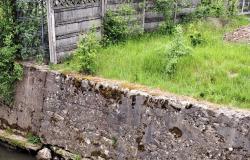The street was littered with rubble, corpses and colored candy. A stray bomb had fallen directly on the confectionery in front of the workshop of “special tailoring for ladies”, which was also completely destroyed in the bombing. The wind of the explosion broke the windows and scattered around, like sweet and colorful shrapnel, thousands of lollipops, pralines, or dragees. “It was in the Cotroceni area. When the sirens started to sound, I was very scared: I had never heard anything like this in my life, I was 14 years old”, Tinca Rotaru, one of the survivors of the American bombing of Bucharest on April 4, 1944, told Digi24.ro. Today marks the 80th anniversary of the great Anglo-American bombing of the Capital from April-May 1944, as a result of which more than 5,000 Bucharest residents lost their lives. In addition, the pages of the newspapers of that period were filled with a macabre new column: that of people “disappeared on the day of the bombing”.
“I was dead for almost a day and a half,” recalls Tinca Rotaru. On April 4, 1944, he was working at a tailoring workshop in the Cotroceni area. In the workshop were the owner and his wife, together with 10-15 young seamstresses.
At around 1:45 p.m., air raid sirens began to sound in Bucharest.
“I was with some girls about my age, I was talking to them while we were getting water from the tap in the yard. The sirens started screaming, we got scared. After the alarm, they started bombing,” says Tinca.
Together with two other girls, Tinca took shelter under a table in one of the workshop’s rooms.
“I don’t know how we ran away, I know that we hugged like that, the three of us. I was sitting under the table, the planes were roaring above. It didn’t last long, because I didn’t know myself anymore: I felt something that pressed and suffocated us. The ceiling had fallen. I lost consciousness
On April 4, 1944, during the Second World War, there was a first massive bombing of the American aviation on Bucharest: 220 B-17 “Flying Fortress” bombers and 93 B-24 “Liberator” bombers dropped over 860 tons of bombs. The west and north-west districts of the city – Cotroceni, Griviţa, Steaua – and first of all the North Station region were hit.
The bombardment resulted in 2,942 dead and 2,126 wounded, according to the volume “History of Romania in data”‘, coordinated by Dinu C. Giurescu (Enciclopedică Publishing House, Bucharest, 2003), quoted by Agerpres.
“I don’t know who pulled me out from under the rubble,” says Tinca Rotaru. “I woke up in the hospital in the morning, the next day. I didn’t know about myself until the next morning. I woke up with a military man who said to me, come on, dad has come. Then my father came to me and said: Let’s go.”
On the way, Tinca learned that she was the only person brought out alive from under the rubble of the workshop. One of his cousins was among the victims.
“I haven’t found anyone yet. I think they all died. There was nothing there, where we were staying, in the Cotroceni area. When I passed by, there were rows of dead, they had just pulled them out of the rubble”
General Constantin Sănătescu wrote about these bombings on April 4, 1944: “At 1:40 p.m. the alarm sounded. 250 Anglo-American planes came, which bombarded the Capital for an hour and a half, causing appreciable damage in the Cotroceni, Griviţa and Gara de Nord neighborhoods. This bombing was a big surprise for us, because we were used to the idea that Bucharest would not be bombed”. (“General Sănătescu’s Journal”, Humanitas Publishing House, Bucharest, 1993).
“I was freezing with fear,” says Tinca. “I was afraid for a long time. I was standing with my head in the ground in fear. It was terrible: I was running when I heard the American bombers. Then I ran away from the Russians.”
In the following days, the “Disappearances” column appeared in the “Universul” newspaper, in which photos and details of the missing persons following the bombing were presented.
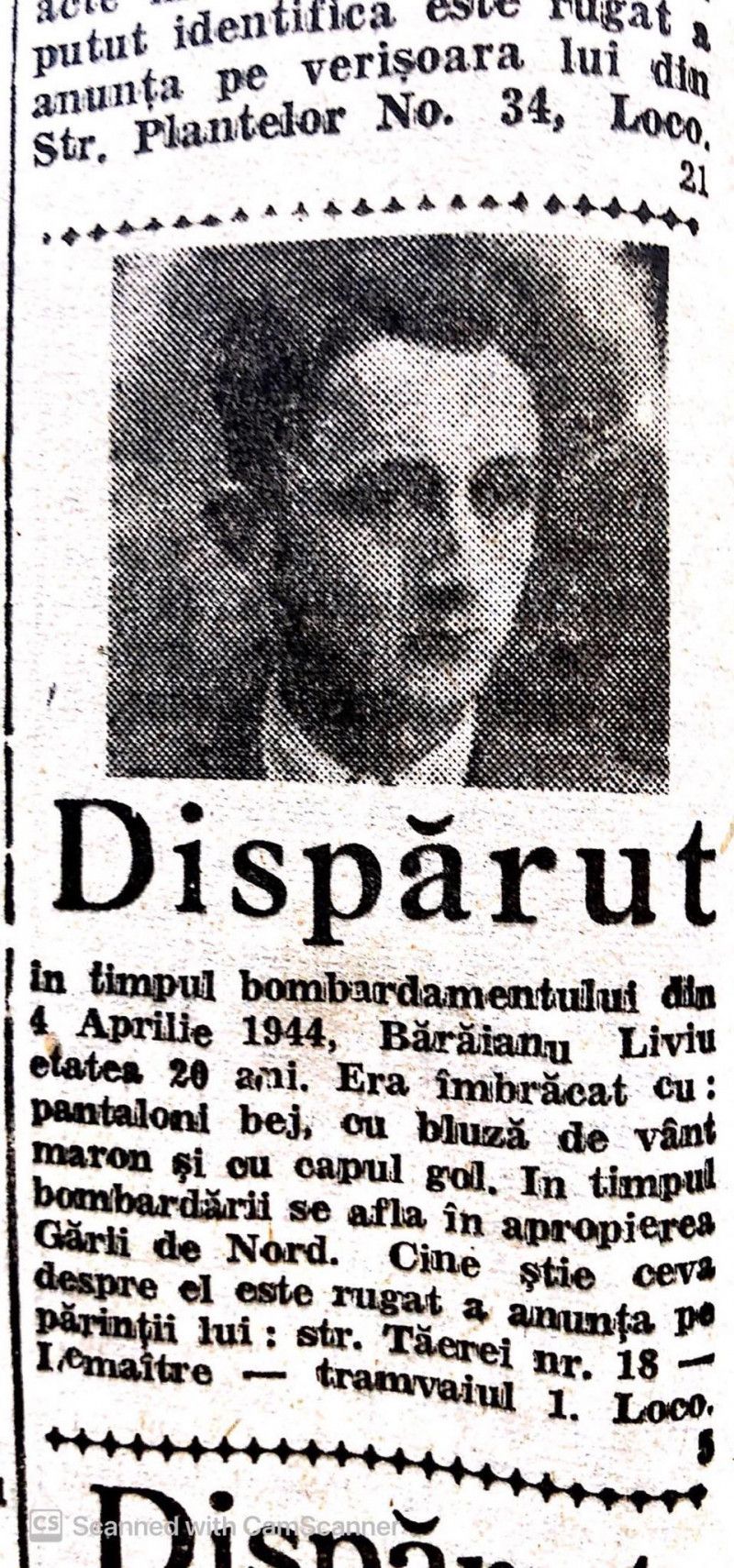
Most of the people from this type of announcement published in the press of the time had last been seen in the North Station area.

Also, in a call by the mayor of Bucharest at the time, the people of Bucharest were urged to call an emergency phone number “to pick up dead bodies” – both human and animal.
“It was found again, that because of the same bombings, some families left the Capital, leaving their dogs that now roam the streets of the city”, according to the mayor’s statement, published in the “Universul” newspaper.
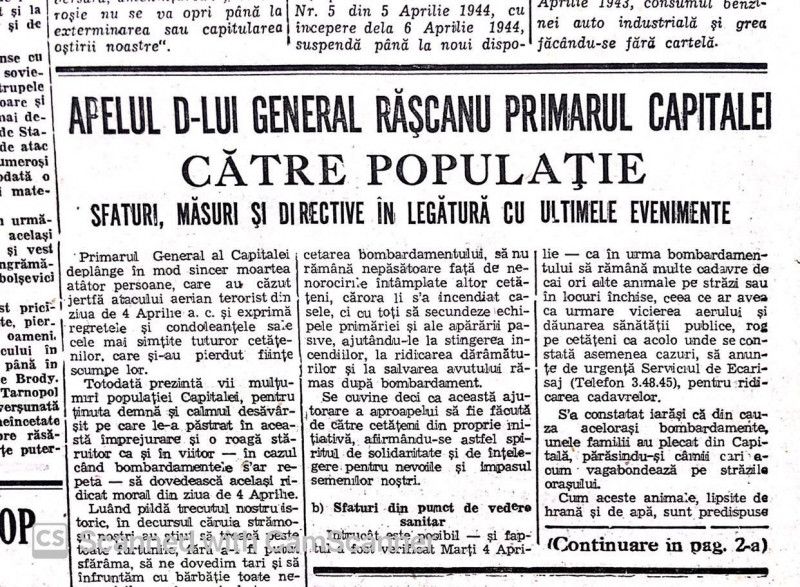
The second bombing of the Capital, which also included incendiary bombs, took place on April 15, 1944. The University of Bucharest was hit, collapsing the old part and burning the attic floor of the new building, and a series of seminar libraries, including the library of the seminary of ancient history and part of the library of the seminary of Romanian history disappeared in the flames, says the historian Constantin C. Giurescu in the volume “History of Bucharest”.
On April 24, 1944, an air bombardment took place on Bucharest and Ploiesti, “carried out in five waves with 600 planes”.
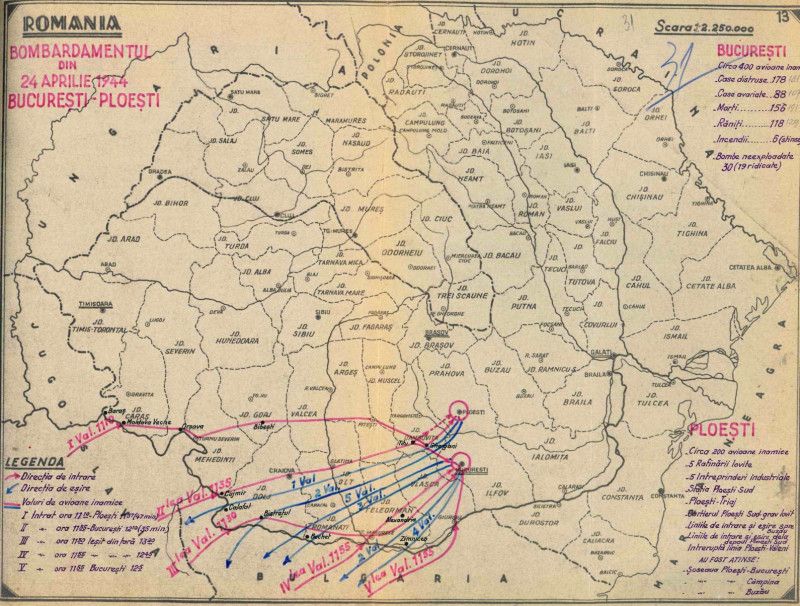
“In Ploiesti, all the refineries were destroyed or damaged, apart from the damage caused right in the center of the city. In Bucharest, they bombed the Atelieror CFR neighborhood, up to Chitila, then the neighborhoods of Bucharest Noi, Dămăroaia and the School of Agriculture”. (“General Sănătescu’s Journal”, Humanitas Publishing House, Bucharest, 1993).
The bombardments then followed at greater or lesser intervals, sometimes very close together. They alternated daytime attacks, carried out by American bombers, with night attacks, carried out by British bombers. The attacks were announced about 15 minutes before, when the planes were crossing the border and heading towards Bucharest: then the sirens sounded the “pre-alarm”, at which point all activities stopped and people started running to shelters.
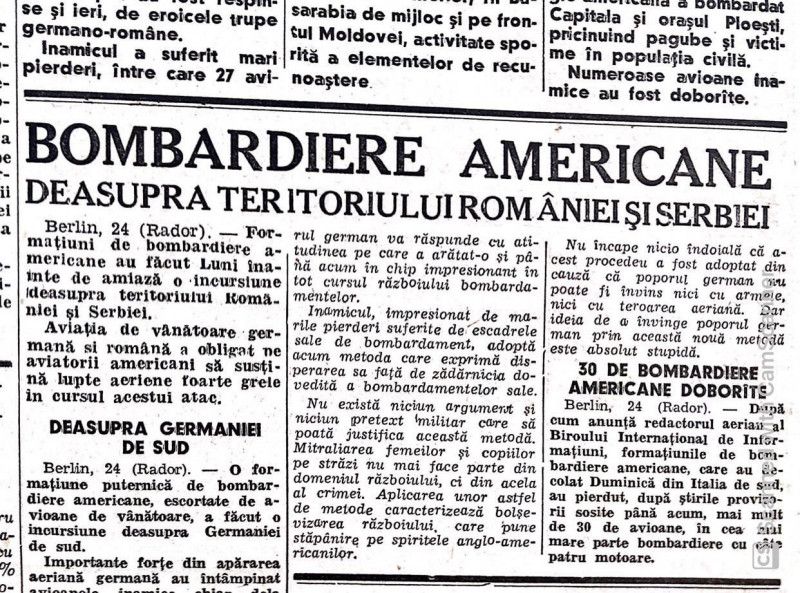
A statistical balance sheet cited by Historia magazine shows that during the 17 aerial bombings, starting with the one on April 4, 1944, carried out by the Americans and the British with approximately 3,640 bombing planes of various types, accompanied by approximately 1,830 planes of hunting during the day, 5,524 inhabitants were killed, 3,373 injured, and 47,974 were left homeless and injured.
3,456 houses were destroyed, 3,473 were partially destroyed, 401 were damaged and there were 2,305 arsonists. For the defense of the Capital, 601 Romanian and 709 German fighter planes rose up and engaged in anti-aircraft battles, often outnumbered.
Tags: years American bombing Bucharest terrible running heard bombers ran Russians
-








